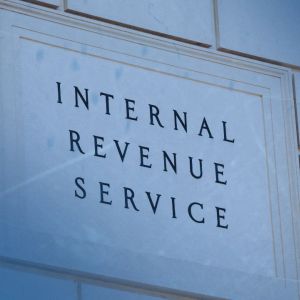In a move that’s sending ripples across Washington D.C., former U.S. President Donald Trump has signed an executive order designed to significantly increase presidential oversight over U.S. federal agencies . This isn’t just about bureaucratic reshuffling; it’s a power play that could redefine how these agencies operate, including those with a significant impact on the cryptocurrency space like the Federal Trade Commission (FTC), Federal Communications Commission (FCC), and Securities and Exchange Commission (SEC). Let’s dive into what this executive order means and why it matters, especially if you’re keeping a close eye on the world of crypto regulation . What Does This Executive Order Actually Do? The core aim of this executive order, as outlined in a White House fact sheet released on February 18th, is to centralize control within the presidency. The administration argues that “so-called independent agencies” have been operating with too much autonomy, wielding “enormous power over the American people without Presidential oversight.” This order seeks to change that by implementing two key directives for all federal agencies , with a very limited exception for the monetary policy functions of the Federal Reserve: White House Review of Draft Regulations: Every agency, including those previously considered ‘independent’ like the FTC, FCC, and SEC, must now submit their draft regulations to the White House for review. This means no more flying under the radar; the President’s office gets a first look and a say in proposed rules. Consultation on Priorities and Performance Standards: Agencies are mandated to consult with the White House on their strategic plans and priorities. Furthermore, the White House will now be setting their performance standards. This is a significant shift towards aligning agency objectives with the presidential agenda. Essentially, this order seeks to ensure that the President’s vision is reflected in the actions of these agencies, regardless of their ‘independent’ status. But what does this mean in practical terms? Benefits of Increased Presidential Oversight Proponents of this presidential oversight argue that it brings several potential benefits: Accountability: By increasing White House oversight, agencies become more directly accountable to the elected President and, by extension, to the electorate. This could lead to policies that are more in line with the administration’s mandate. Policy Coherence: Centralized review can help ensure that regulations across different agencies are more aligned and coherent, reducing conflicting policies and streamlining governance. Efficiency: The White House could potentially drive agencies to be more efficient and focused on key priorities by setting performance standards and overseeing strategic plans. Responsiveness to Public Will: A more directly overseen agency might be more responsive to the broader public will as interpreted by the elected President. Challenges and Potential Downsides However, this executive order isn’t without its critics, and there are significant challenges and potential downsides to consider: Politicization of Independent Agencies: The biggest concern is that this move could politicize agencies that were designed to be independent from political influence. Decisions at the FTC, FCC, and SEC, for instance, are supposed to be based on expert analysis and legal principles, not political expediency. Reduced Agency Expertise: If political considerations become dominant, it could sideline the expertise within these federal agencies . Agency staff possess deep subject-matter knowledge that could be undervalued in favor of White House directives. Regulatory Uncertainty: Frequent changes in presidential administrations could lead to regulatory whiplash, as each new administration seeks to impose its priorities. This uncertainty can be detrimental to businesses and markets, including the rapidly evolving crypto market. Stifled Innovation: Overly centralized control might stifle innovation within agencies, making them less agile and responsive to emerging issues and technologies. Impact on Crypto Regulation: What to Watch For For those in the cryptocurrency world, the implications of this executive order are particularly noteworthy. Agencies like the SEC and FTC play crucial roles in shaping crypto regulation in the U.S. SEC Oversight and Crypto The SEC is at the forefront of regulating digital assets, determining which cryptocurrencies are securities and enforcing securities laws in the crypto space. Increased White House influence could mean: Shift in Enforcement Priorities: Presidential priorities could influence the SEC’s enforcement agenda, potentially leading to a tougher or more lenient stance on crypto depending on the administration’s views. Changes in Regulatory Approach: The White House might push for a specific regulatory framework for crypto, potentially accelerating or decelerating the pace of regulation. Impact on Innovation: Depending on the direction, increased oversight could either provide clearer rules for crypto businesses to operate within or create a more restrictive environment that stifles innovation. FTC and Consumer Protection in Crypto The FTC is concerned with consumer protection and preventing fraud. In the context of crypto, this means: Increased Scrutiny of Crypto Scams: The White House might direct the FTC to ramp up efforts to combat crypto-related scams and protect consumers from fraudulent schemes. Focus on Data Privacy in Crypto: With growing concerns about data privacy, the FTC could be tasked with developing stricter rules around data handling in the crypto industry. Examples of Potential Changes Imagine a scenario where the White House, under a particular administration, views cryptocurrency as a national security threat. With increased presidential oversight , they could direct the SEC to take a much stricter stance on crypto exchanges and ICOs, potentially leading to more aggressive enforcement actions and tighter regulations. Conversely, an administration more favorable to innovation might push for a lighter regulatory touch, encouraging agencies to adopt a more hands-off approach to foster growth in the crypto sector. Another example could be in the realm of consumer protection. If the White House prioritizes consumer safety in digital markets, the FTC could be directed to launch a major initiative to educate consumers about crypto risks and crack down on deceptive crypto marketing practices. Actionable Insights: Staying Ahead of the Curve For anyone involved in the cryptocurrency industry, understanding these shifts in federal agencies oversight is crucial. Here are some actionable insights: Monitor Regulatory Developments Closely: Keep a close watch on pronouncements from the White House and the affected agencies (SEC, FTC, FCC). Regulatory changes can happen quickly under this new framework. Engage in Policy Discussions: Participate in industry discussions and engage with policymakers to voice your perspectives and contribute to informed regulation. Prepare for Regulatory Changes: Businesses in the crypto space should be prepared to adapt to potential shifts in regulatory approaches and enforcement priorities. Flexibility and compliance will be key. Seek Expert Legal Counsel: Consult with legal experts who understand both crypto and regulatory law to navigate the evolving landscape effectively. Conclusion: A New Era of Presidential Influence? Trump’s sweeping executive order marks a significant shift in the balance of power between the presidency and federal agencies . Whether this leads to greater accountability and policy coherence, or to politicization and stifled expertise, remains to be seen. For the cryptocurrency world, it introduces a new layer of uncertainty but also highlights the importance of understanding and engaging with the evolving regulatory environment. The increased presidential oversight means that the political winds in Washington D.C. could have a more direct and immediate impact on crypto regulation than ever before. Staying informed and adaptable will be essential for navigating this new era. To learn more about the latest crypto regulation trends, explore our article on key developments shaping crypto regulation future developments.








